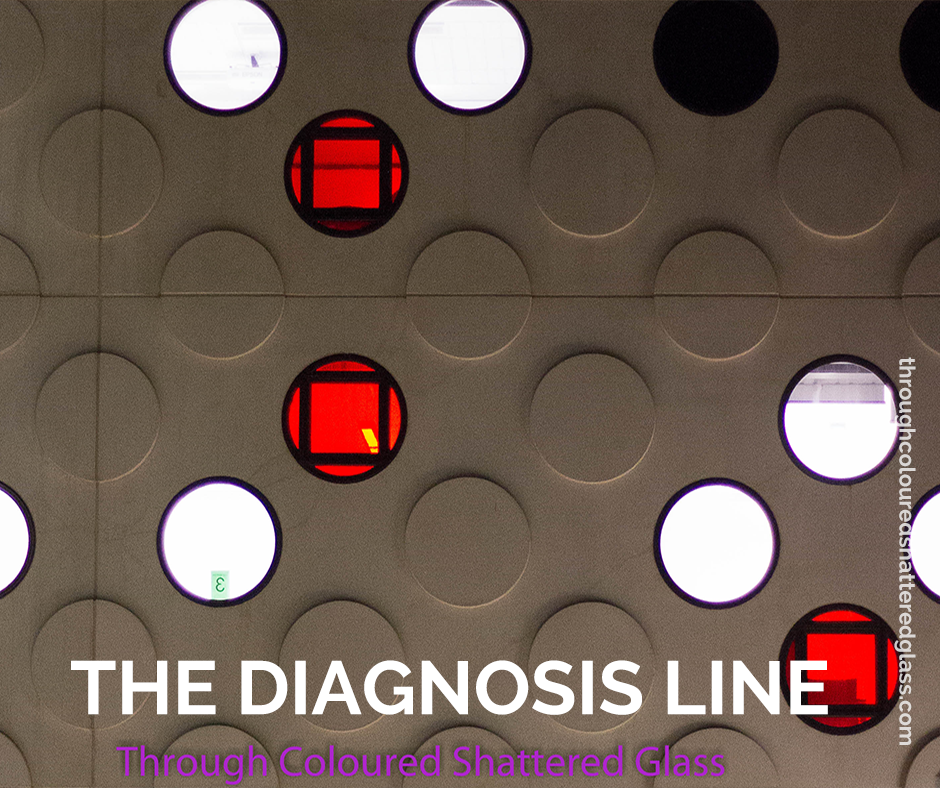The diagnosis line.
Like any other sort of disorder of diagnosable condition, the lines which hold one person within and another outside are open to interpretation. Keeping this in mind, there has been much speculation about Autism diagnosis, particularly with the more recent rise in statistics. Are we over diagnosing it now? Is it being miss-diagnosed? What makes one person diagnosable? Where is the line?
The truth is that humans are so dynamic in nature that there are no lines. A person who has a disorder of mental health (brain) condition can experience it and cope with it completely differently simply by having a different type of personality. They may also cope differently due to their life circumstances, interpersonal relationships, family supports and even how they eat, and what that interaction does with their body. With all that in mind, it is possible that the line may indeed move and change. So the long answer to the question of where to draw the line is “there is no line”. Before you jump into a world like “The Matrix” in your mind, let me explain this in a more grounding manner. The line is put there by health professionals, as a means of communication to enhance treatment and understanding, as is the label, or illness/condition/disorder. It is used to help define a set of issues a person has, to cut down the amount of re-explanation by a patient, to give a health professional a starting point, and a set of guidelines to check. It means that the amount of assessment done by each individual health professional is cut down. It also means they will not need to give the patient some of the same testing over and over again. If a child with a diagnosis has a doctor, paediatrician, occupational therapist, psychologist and a physiotherapist, each one of them can know that with this particular label in mind, they will know to look for a set of difficulties they have been taught have an association. So really, it’s just a means of communication, and NOT actually something to provide a rigid road map for the person with it. A person with a diagnostic label is just as variable as a person without. Aside from that meaning that they go through life stages just like anyone else (though perhaps at a different rate), it means that the diagnosis is ‘just’ a diagnosis.
The short answer about where to draw a line involves a person’s capability to cope living independently with daily to weekly issues. That’s where the professionals draw the line, as I was taught at University. People only generally seek out a diagnosis when they can’t cope for some reason. Some people are experiencing an ‘episodic’ period, and may never have another, others may have several times in their life when they have difficulty coping, and others are in sufferance continuously, yet all 3 of these groups may be given the same diagnosis. I had an adult approach me, telling me he thought he might have Aspergers Syndrome, and he was wondering if he should get a diagnosis. He had a full time job, a wife whom he had a close relationship with, and children. He owned a home, and kept it maintained. He paid bills, cleaned and cooked, and also had a regular circle of friends. He was coping with daily life quite well, so I wondered why he was asking. For him it was a question of how he thought of things. His dismissal of social necessities was one thing causing him to ask. His judgement of others’ motivations etc. so in the end, while he didn’t really need a diagnosis, his self-assessment of possessing some Aspergers characteristics helped him understand others. This was a good and simple outcome, but often the question of diagnosis isn’t so simple.
Diagnosis helps with treatments, support and understanding, but it isn’t a blueprint. It is something changeable and only useful in some aspects, and it’s also something that can be a burden if it causes others to judge. This is the point where misdiagnoses are very problematic. This is where people can suffer from being placed into the wrong category. This is the main reason we need to be careful with diagnosis, and why as a community a person’s diagnosis shouldn’t really matter. Because behind every diagnosis, right or wrong, there is a person, with all the dynamics a typical person has, and they are complicated, and worthy of consideration.
If you would like to discuss the ideas in this post further, tell your story, or share your experiences, please join us on our Facebook page.
Please be respectful of others at all times. We are all on different journeys.
Posts you may also like…
Walking The Black Dog
Some of you may have heard of depression referred to as “The Black Dog”, and I find this an interesting nickname, as I have always thought of emotions as being rather like untrained pets. Sure you can ignore them, lock them away, or even let them run riot, but they will tend to make a lot of noise, chew things up that you’d rather not lose, and pee on the carpet at the most inopportune moments.
Melbourne needs help
While it took some months last year to get to this point, Melbournian’s have fallen into the same place they left last November, when the lockdown was removed.
Tazzie’s Transport
In today’s world it has become so much more valuable to have your own individuality, and what better time to be on the Autism Spectrum.




